Located over 10 km from downtown Bac Lieu City and around 2 km from the coastline, Xiem Can Pagoda is among the largest Khmer temples in southern Vietnam.
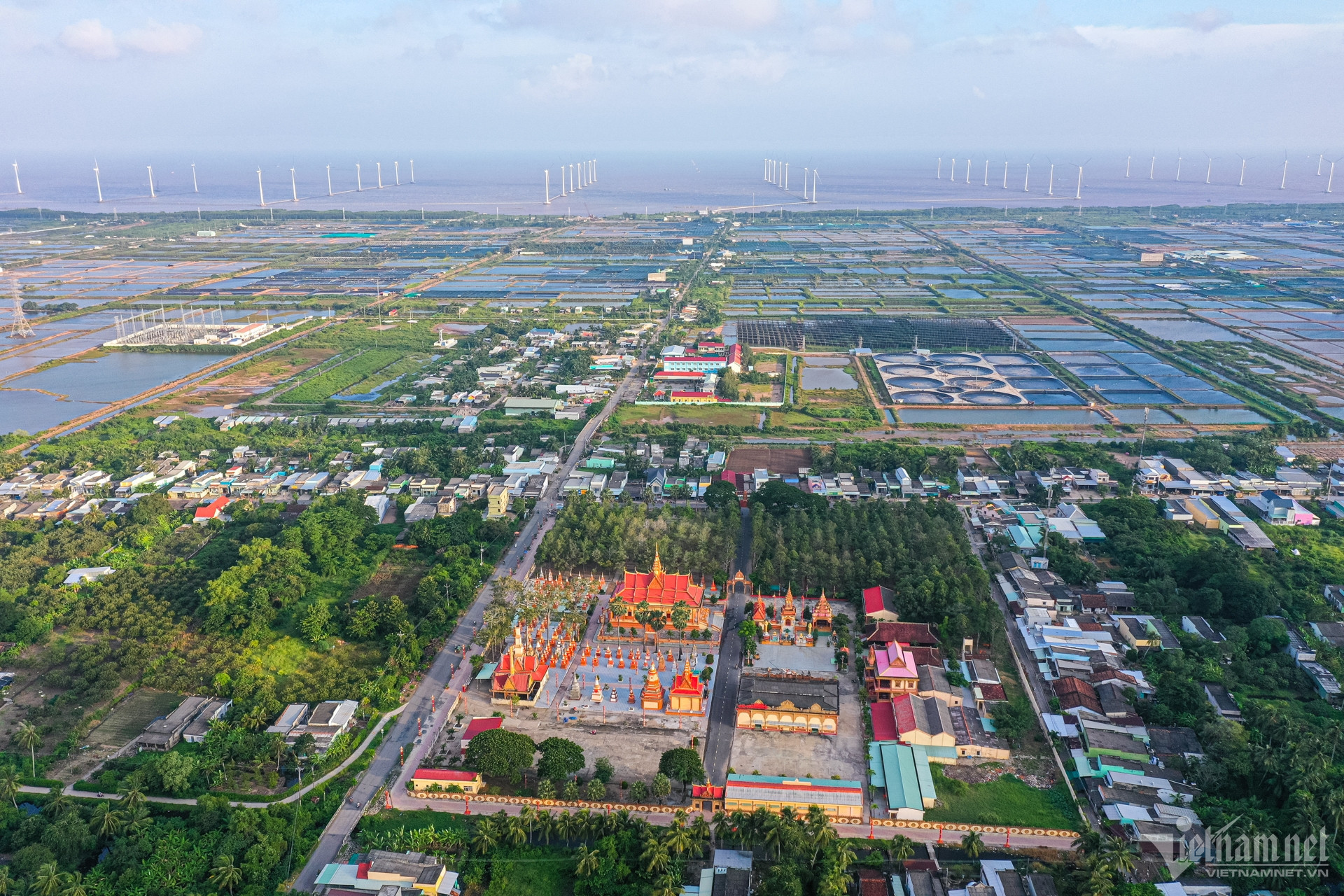
Construction of the pagoda began in 1887 on a site covering nearly 5 hectares. Originally named Komphisako in Khmer, the temple's name reflects profound Buddhist wisdom and enlightenment.
The name Xiem Can derives from Tiêu - the Teochew dialect spoken by the Chinese community in Bac Lieu - and means "bordering water," referencing the temple’s location next to the alluvial coastal plain.
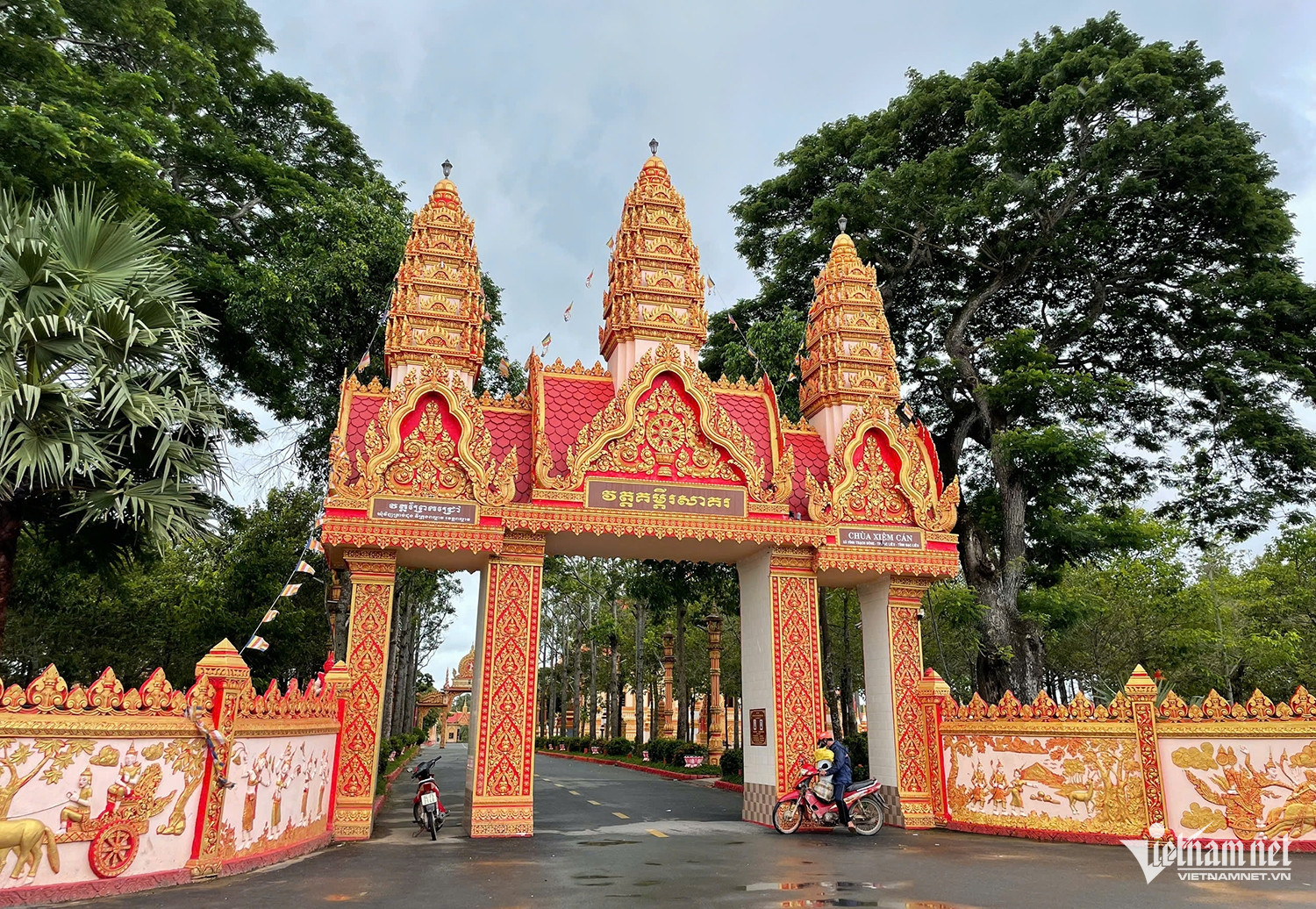
The temple’s architecture includes the tam quan entrance gate, surrounding walls, main hall, sala (assembly hall), and bell tower. All structures face east and follow Theravāda Buddhist traditions infused with distinct Angkorian-Cambodian stylistic elements.
A visitor’s first impression is the vibrant entrance gate adorned with a multi-headed serpent statue and images of dancing women. Surrounding the temple are intricately carved walls and rows of tall sao and dau trees.
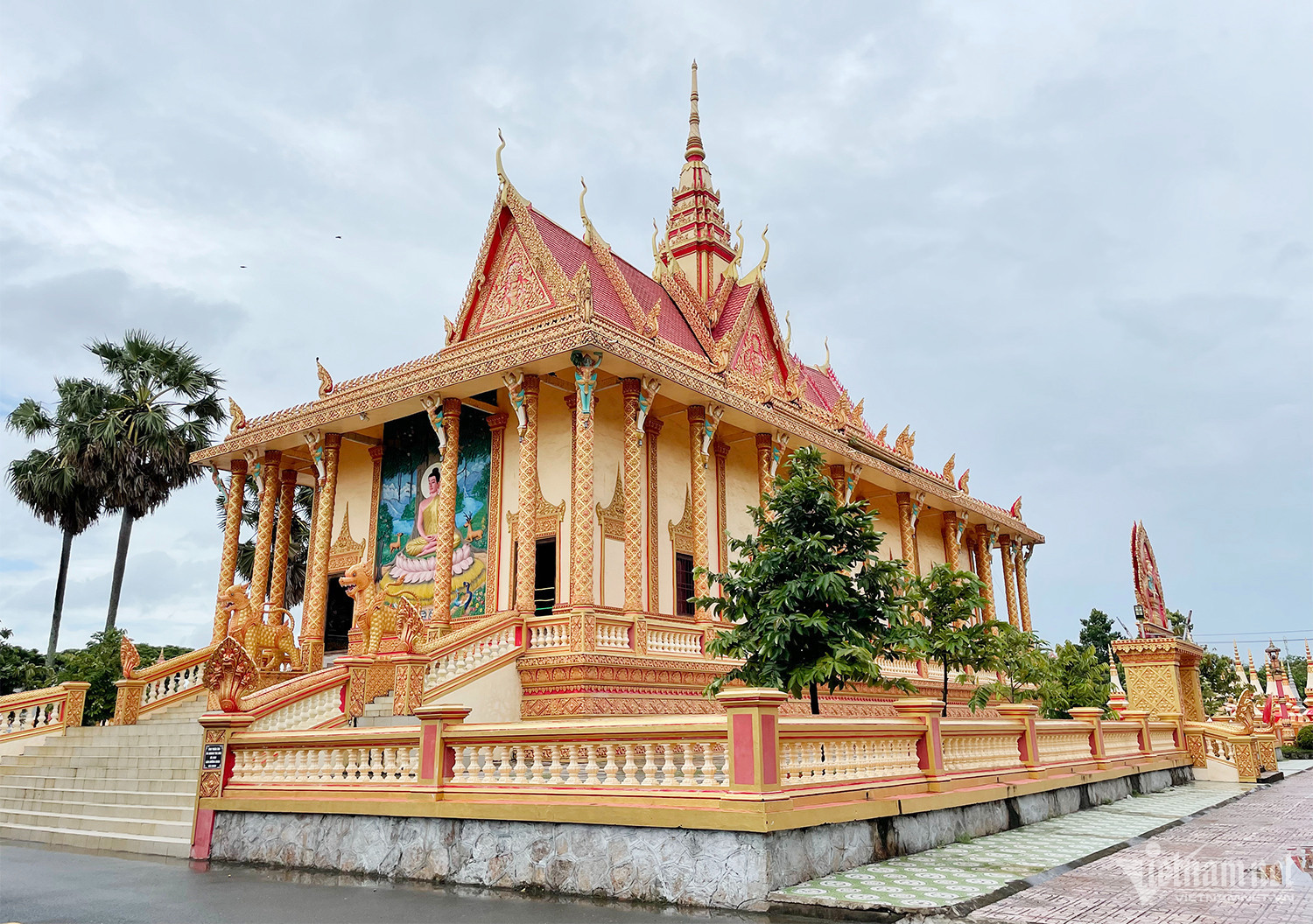
Walking in from the main gate, a reclining Buddha statue lies to the left, while the main hall stands to the right, elevated on a 2-meter foundation. The hall is rectangular and reached by an 18-step staircase, guarded by a grand pair of mythical unicorn statues.
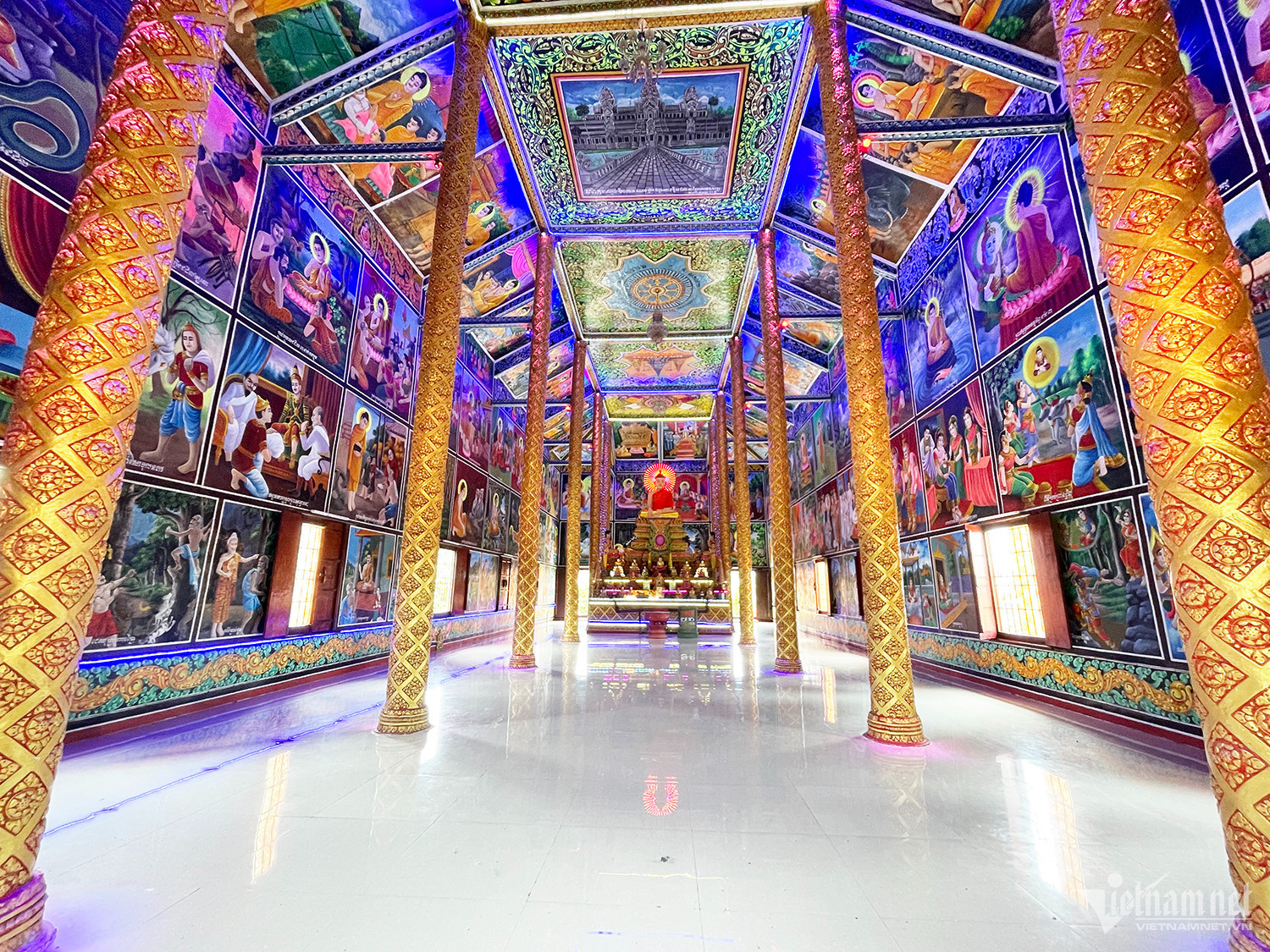
Inside, the walls and ceiling are elaborately painted with hundreds of colorful murals illustrating the life of Gautama Buddha - from birth and enlightenment to preaching and final nirvana. At the center sits a large Buddha statue, gazing serenely downward as if bestowing blessings upon all.
 |
 |
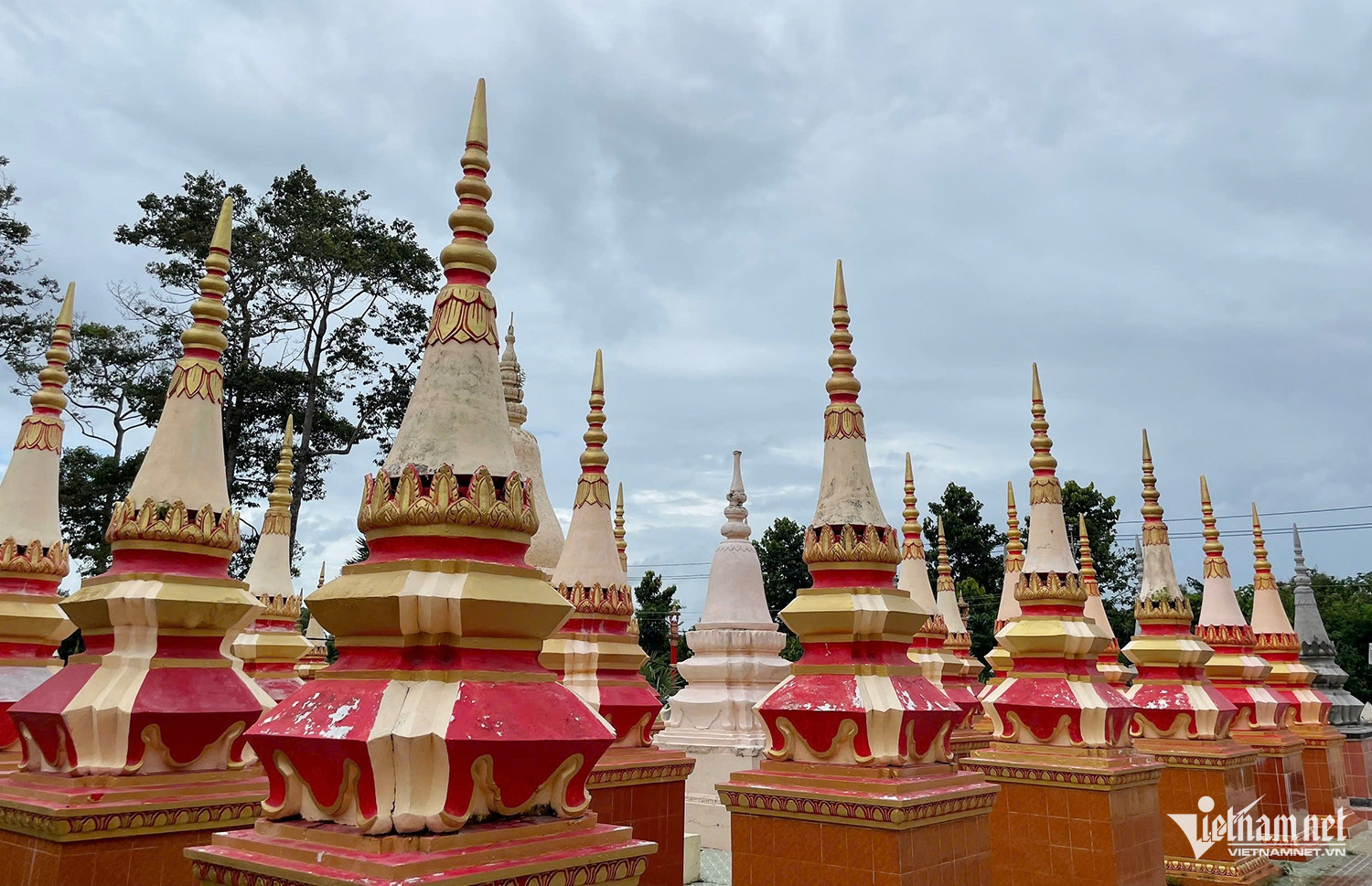

The temple hosts several major festivals, including Chôl Chnăm Thmây (Khmer New Year) from April 14–16; Sen Dolta (Khmer Ancestor Day) from October 8–10; and Kathina, the robe-offering festival, held from September 16 to October 15 on the lunar calendar.
Tran Tuyen